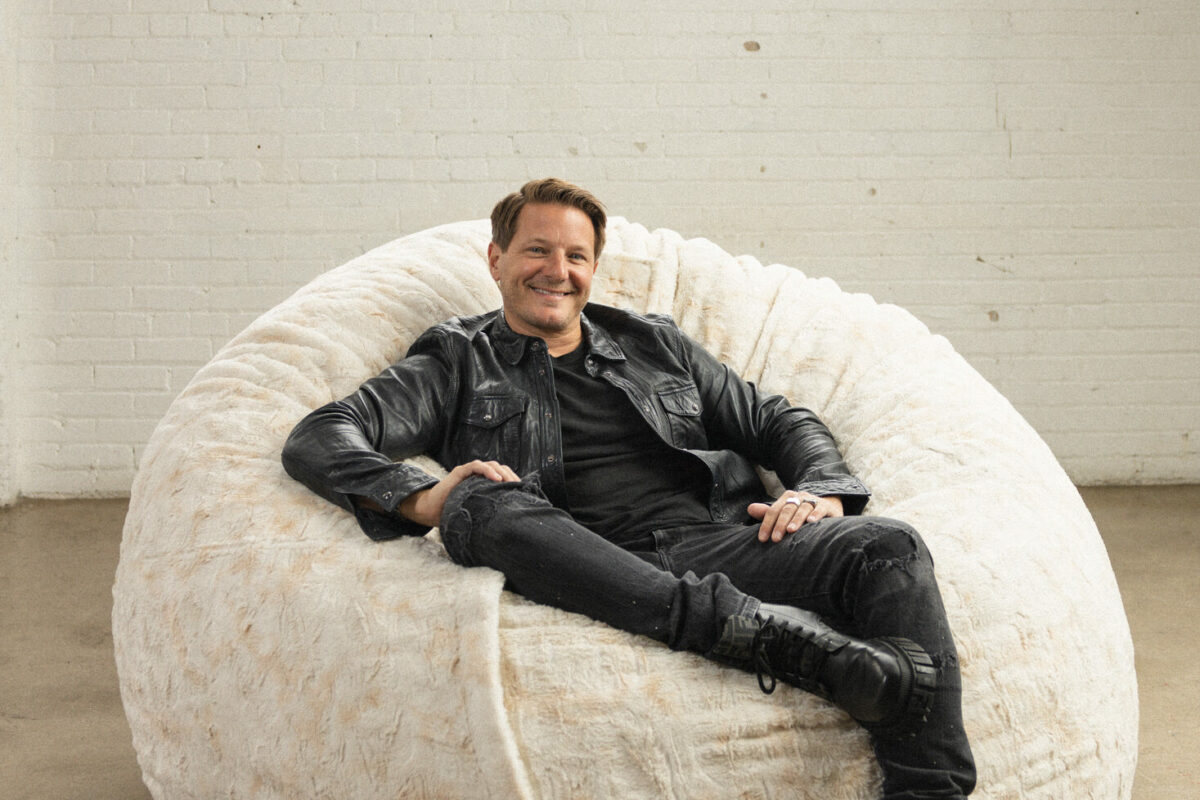In 2003, McDonald’s was, as BusinessWeek stated, “In Hamburger Hell.” McDonald’s subsequent turnaround had many facets. One of McDonald’s critical strategies was modernizing the brand-business without jeopardizing its heritage. In other words, McDonald’s aimed to evolve its heritage for today without losing its roots from yesterday.
Brand-businesses can live forever, but only if properly managed. Contemporizing an established, deep-heritage brand-business while maintaining the brand-business’ provenance is an excellent way to keep the brand-business flame alive. Basically, the idea is making old new. “Old is new” is all around us.
- Retro and vintage clothing reflect “old is new.”
- Chanel No.5 reflects “old is new” with a very contemporary Eternal No.5 High Jewelry Collection.
- The Mini vehicle reflects “old is new.”
- Vinyl LPs and turntables reflect “old is new.” As is the new VW EV microbus, the ID.Buzz.
- Tiffany is betting on “old is new.” Fast Company magazine listed Tiffany & Co. one of the top ten most innovative brands in 2023. Fast Company was impressed by the modernization of “America’s oldest luxury brand.” Tiffany’s revitalization has been based not just on product but on strategies that contemporized the brand-business’ provenance: luxury and American innovation.
- Blancpain, the luxury timepiece with a 1735 provenance of Swiss watchmaking, is new with its Blancpain x Swatch Scuba Fifty Fathoms Collection.
- 1960s counterculture foods such as granola, tofu, nori, daikon, turmeric, dates, miso, tahini, ginger, soy milk, almond milk, brown rice and kombucha – all “old is new”- fill grocery store shelves. The Moosewood cookbooks live.
And, Carhartt, the 1889 brand-business manufacturing heavy-duty, long-lasting, high quality, extremely durable workwear, embodies “old is new.” Carhartt is both timeless and timely. Carhartt clothing is new, featuring modern technology aimed at flame, water, stain and abrasion resistance. Also new is Carhartt women’s wear for women-in-the-field workers that “embraces its (Carhartt’s) core values of durability and comfort.”
But, Carhartt is still and always focused on clothing for laborers. Carhartt has never strayed from its core customer base and what core customers love about the brand. Speak with people who work outdoors in extremely cold weather and they extol the layers of Carhartt they wear to stay warm. Carhartt is a modern brand-business with a deep-seated, compelling provenance that traverses time.
A brand-business provenance is its legitimate source of expertise and authority. Provenance creates and stand for familiarity, quality, leadership and trust. In other words, provenance creates authority. Provenance is a brand-business’ past of authenticity, a present of genuine customer bonds and a trustworthy foundation for the future. A compelling provenance is a predictable, driving, relevant, distinctive history. The power of provenance is not about preserving everything from the past. The power of provenance is about preserving the best of the past for a successful, profitable present and future.
Work clothes with a turn-of-the-century provenance would seem to be a hard sell in a Tic Tok, fast-fashion, influencer-inspired, today-over-timeless environment. Duluth Trading Company, a work clothes brand-business, is having difficulties, its quirky advertising notwithstanding.
According to Seeking Alpha, “DLTH (Duluth) is likely on a slow decline to zero. The company, while providing good quality products that certainly have their place in the market, is unable to gain upward traction. Marketing efforts have fallen flat, innovative responses to industry developments have been non-existent, and competition has grown substantially. We believe it is likely too late for a resurgence.” Seeking Alpha also believes that Duluth’s advertising has probably lost its mojo.
But, Carhartt has shaped its present by keeping its provenance fresh. Seeking Alpha sees Carhartt as “playing the game” better than Duluth. Yet, Carhartt is not playing a game. Carhartt is relying on its exemplar past to inform its present and future modernity.
Aside from its women’s work clothes and Carhartt’s workwear fabric technologies, Carhartt has created other contemporary connections.
In May of 2023, Carhartt announced a partnership with The Weather Channel. Carhartt’s Chief Brand Officer told the press, “As the world’s premium workwear brand since 1889, Carhartt has always been a brand for all hardworking people that endure varying weather conditions on the job. Meteorologists in the field experience some of the most extreme weather conditions imaginable, and we know that many people rely on meteorologists to inform them about the gear they wear while working outside. Partnering with The Weather Channel is a natural fit to not only keep meteorologists protected from the elements, but to showcase hardworking gear performance in its most natural element: outside and in the field.”
United Airlines airfield workers wear Carhartt. It is not always warm, sunny and oil-and-dirt-free on the tarmac.
In July 2023, The Wall Street Journal produced a video on Carhartt. Titled, “How Carhartt Survived A Changing Workforce.” The point of the video was, “When the company launched its line of workwear over a century ago, 69% of the U.S. workforce had jobs in fields like farming, mining and manufacturing. Today, the brand is spotted on models, rappers and even former presidents, despite never swaying from its core strategy.” Having said this, Carhartt has never featured its clothing as streetwear.
Even though in the 80’s and 90’s you saw skateboarders and rappers wearing Carhartt, the brand-business did not feature these uses: Carhartt stayed with its workers. Unlike Dickies, another work person’s clothing company, that dove into the street wear trend, Carhartt continued its focus on workers working in its clothes. Further, unlike Dickies, Carhartt did not expand its offerings. Carhartt has a laser-focus on being the best clothing for the on-site job. This means fewer, better items; focusing on what workers want and need to wear to perform at their best.
Although, Carhartt has a licensing agreement for a spin-off, WIP (Work In Progress) featuring genuine Carhartt products tweaked for an international audience (a different consumer), WIP is overseen by those at Carhartt. Carhartt stays as an established workwear brand-business in a changing world.
According to The Wall Street Journal, Carhartt was born when its founder, Hamilton Carhartt asked railroad workers about their problem with clothing. (An original problem detection study.) Thus, its first worker’s wear product was born. Carhartt has always been focused on its provenance: “original equipment for the American worker.” Carhartt has never strayed from its core products. In fact, Carhartt believes that its strong, resilient foundation is what allows for experimentation; its ability to play around with contemporary work wear styles that are grounded in a credible past.
Shaping its future with its iconic past, makes Carhartt ageless in the eyes of its customers. Carhartt has values that cross and appeal to multiple generations. Customers perceive Carhartt to be authentic; the real deal.
Authenticity is more than a buzz word. Authenticity is a driver; authenticity is a want that we look for in the products and services we buy. Increasingly, we purchase brands that we believe deliver the “real thing” over a processed, manufactured, who-knows-how-it-was-grown-or-made thing. Authenticity is more than mere ingredients or material sourcing. Authenticity is more than having been an inventive brand with a history of “firsts.”
People look at the how, when, where, and why of the brand-business instead of just looking at what the brand-business sells: we want something genuine, honest, bona fide. Authenticity means the brand-business derives from undisputed origin; it is genuine, legitimate and truthful. A credible provenance allows a brand-business to be relevant while remaining authentic.
“Old is new” gets to the heart of what many people today fear is gone: a true commitment to enduring values and the people who share in these values. A strong, powerful provenance is an advantage against competitive actions. Provenance is a signal of genuineness for all those engaged with, and invested in, product and service brand-businesses. Provenance is the basis for old is new.
A brand is more than an identity: a brand is a promise. A brand is a promise of an expected relevant, differentiated, trustworthy experience. And, that experience includes a culture and the culture’s values. A brand is a seal of permission to believe. A compelling provenance provides the permission to believe in a brand because provenance answers the customer question: “Why should I believe the promise you are making to me?”
Provenance and authenticity are the foundation upon which a brand-business builds its ability to be contemporary no matter what is the era. Carhartt uses both as credibility when it comes to modernization. By never straying from its roots, by appealing to multiple generations of customers with connective values, Carhartt can be old and new at the same time.
Contributed to Branding Strategy Insider by: Larry Light, Author of The Paradox Planet: Creating Brand Experiences For The Age Of I
At The Blake Project we are helping clients from around the world, in all stages of development, define or redefine and articulate what makes them competitive at critical moments of change. Please email us to learn how we can help you compete differently.
Branding Strategy Insider is a service of The Blake Project: A strategic brand consultancy specializing in Brand Research, Brand Strategy, Brand Licensing and Brand Education




